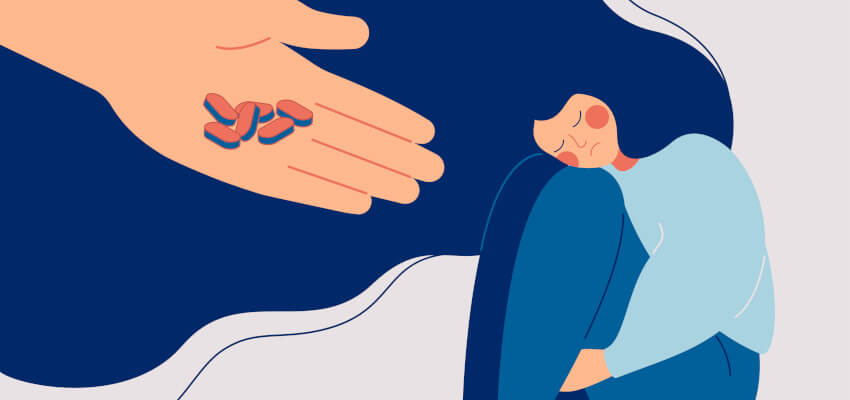
Two breakthrough compounds that bind to the same receptor as LSD could help scientists develop powerful new antidepressants with no hallucinogenic side-effects.
Identified in a US multi-university study, the compounds are designed to target the 5-HT2AR receptor associated with psychedelics like LSD and psilocybin mushrooms - but without producing the accompanying ‘trip’.
The two most promising 5-HT2AR agonists that the group studied demonstrated powerful antidepressant and anti-anxiety effects in mice, which lasted for up to two weeks.
Currently named (R)-69 and (R)-70, they had the same antidepressant impact on the mice as fluoxetine, but with as little as 1/40th of the dose. What’s more, they achieved this without any discernible signs of psychedelic activity in the mice, such as head twitching.
The discovery raises hopes of developing new, more effective treatments with fewer side-effects for depression, anxiety, Post Traumatic Stress Disorder (PTSD) and other neurological conditions – and follows a recent revival of interest in the potential of psychedelics to treat a range of disorders. Clinical studies have demonstrated that, when given in combination with psychotherapy, psilocybin, MDMA and ibogaine can all help reduce depression and PTSD.
However, a number of pharmaceutical companies are also working on designing novel psychedelic-inspired medicines that treat patients without them having to undergo a long and often challenging ‘trip’.
“There wasn’t really any sense that drugs like psychedelics that activate this receptor would be therapeutic until psilocybin was tried in clinical trials for depression and shown to have this remarkable effect,” said consortium member Brian Roth, of UNC Chapel Hill.
“That really galvanized our interest, which basically started this collaboration.”
One of the most significant discoveries of the new study is that the new compounds set off an antianxiety effect via a neural pathway which is separate from the hallucinatory pathway activated by LSD.
“The receptors are like antennae,” said UC San Francisco professor of pharmaceutical chemistry Brian Shoichet. “They pick up a chemical signal, and downstream a bunch of things get activated in a cell.”
The consortium wrote in Nature that, “owing to its role in treating psychiatric disorders such as schizophrenia, depression and anxiety… 5-HT2AR… represents the canonical molecular target for LSD-like psychedelic drugs.”
Knowing that the receptor’s “small and well-formed” orthosteric site might prove suitable, they docked a virtual library of 75 million tetrahydropyridines against it. After more than a year of optimisation, the team identified (R)-69 and (R)-70 as the most promising drug candidates.
“The final molecules were 100 times more potent than what we started with,” Shoichet said - adding that, although they were much less strong than LSD, “In the animals they are very potent, much more potent than Prozac.”
The authors went on to state that “The unusual phenotype of the new agonists – conferring antidepressant drug-like activity without apparent psychedelic-like activity- may reflect their unusual functional selectivity between G protein and βArr recruitment through the 5HT2A receptor.
“Admittedly, a role for off-targets, including other 5HT2 subtypes, and even for active metabolites, cannot be excluded.”
The next job for the team is to optimise the compounds and make them selective enough for clinical trials, as well as creating molecules that have no affinity for the 5HT2b receptor. Drugs that hit 5HT2b – like LSD and the banned anti-obesity combination treatment fenfluramine/phentermine (fen-phen) - can cause valvular heart disease when taken chronically.
The group’s research into (R)-69 and (R)-70 was supported by a $27 million research grant from the US Defense Advanced Research Projects Agency (DARPA) – which also helped develop Moderna’s Covid-19 vaccine, weather satellites, GPS, and personal computers.
The consortium’s approach has meanwhile been patented by Yale University, UNC Chapel Hill, and UN San Francisco, as well as licensed to Boston-based start-up Onsero.
TRC and ATCC – for all your research chemical and drug discovery needs
TRC has more than 40 years’ experience working through some of the most complex synthetic pathways to deliver you high quality research chemicals. Our world-leading chemists engineer specific solutions for customers. We have a large range, including many unique bioactive molecules for research into mental disorders and neurodegenerative diseases. TRC also provides wide ranging controlled substances, hallucinogens, and psychedelics. To support neurobiology in general, ATCC offer a large collection of in vitro tools, including NPC derived from normal and Parkinson’s donors, LRRK2 KI lines, Schwann cells, >70 brain lines and HCMI Patient Derived brain cancer models.
|
